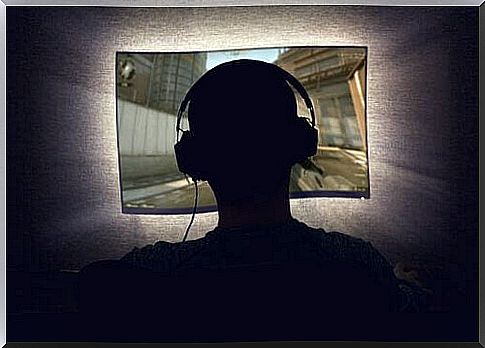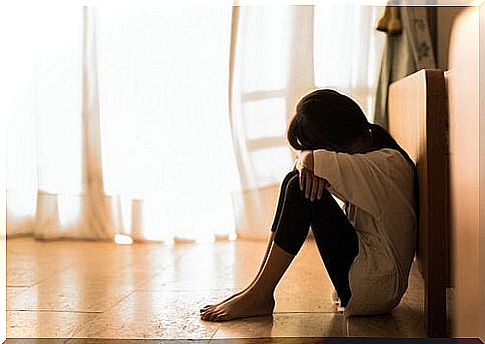Hikikomori – Young People Isolate Themselves In Their Rooms

The hikikomori are young Japanese people who avoid leaving their rooms. Loneliness has always been valued in Japanese culture : it stands for the search for wisdom about ourselves, nature and our relationships with our environment. A good idea in a way. But in today’s Japanese society, that constructive loneliness has turned into pathological isolation.
After the Second World War, Japanese society quickly began to develop economically, resulting in an increasingly demanding school and work environment. Young people received a rigorous education. The iron discipline of acquiring knowledge was promoted above everything else and the communicative and psychological aspects of education were neglected. On the part of the parents, the public strategy was supported, gaps were not filled.
In the face of this pressure from family and society, Japanese youth have developed a form of isolation that is (still) seldom seen in the western world: They spend months or years in their rooms without going out into the real world.
Hikikomori parents see their children as a shame, something to hide from their neighbors and relatives for fear of scandal and stigma.

The person who coined the term Hikikomori was the Japanese psychiatrist Tamaki Saito in his book on the rescue of the Hikikomori (not available in German) in 2002. In it, he described Japanese youths who retreat to their rooms as victims of an increasingly suffocating person and competitive education system and labor market. He pointed out that the main problem was poor communication between parents and children.
Current Japanese society
Japanese society has developed at a dizzying pace. But in the new millennium, an economic crisis set in, in which one had to demonstrate impeccable performance and discipline for social advancement all the more. Many couples who have experienced the previous economic growth only had one child. In this child all her hopes for a better future rested. And frustrated desires of their own youth.
These families went to great lengths to help their child be successful in the workplace. For example, they sent it to the best school, from which they hoped for a strict but excellent education. They involved the offspring in a myriad of extracurricular activities, leaving little or no room for leisure and peer relationships.
Schools in Japan still maintain a very high level of education. They swear by continuous exams, large amounts of homework, and constant supervision of the student. Japanese adolescents often attend long sessions during which they spend evenings and weekends at school. Sometimes intensive camps are organized in which students sleep and eat in classrooms and take exams on different topics one after the other. Many don’t sleep until they pass all of the tests.

Many never adapt, either because they have special educational needs or because the constant stress causes them mental disorders. Unfortunately, Japan does not have the necessary infrastructure to help young people who are unable to keep to the intended pace.
Competition, isolation and withdrawal
Many of these children and young people are beginning to look at their peers with suspicion. Many are bullied because of bad grades or other non-normative aspects of their personal lives. There are no counselors or social workers to attend to the students’ psychological needs so the problem persists.
Hikikomori do not see work as an opportunity to develop their skills and gain personal independence. They see it as hostile terrain that they fear because they cannot meet productivity expectations. You feel alone, stressed, isolated. And at the same time pressured by her family to become more competitive.
If we add in the country’s incredible technological expansion, that’s an explosive cocktail. It is no longer surprising then that the Hikikomori feel more attracted to retreating into a virtual life. For them, this is a way of telling society and their families that they are through with reality. Your world is more beautiful when viewed on a screen. You use the possibilities of virtual entertainment within these four walls, eat and sleep here.

However, if a young person locks himself up in his room for weeks and is not followed by a response, the problem becomes chronic. The Hikikomori tend to drop out of school and lock themselves up in their rooms in complete isolation. They neglect self-care and if, for example, their hair needs to be cut, they do it themselves. Years can go by. The whole thing has turned into an epidemic and it is estimated that there are around two million hikikomori in Japan.
Japanese youth are falling victim to an increasingly stifling and competitive education system and labor market.
How to solve the problem
The Japanese authorities are intensively looking for ways to help these young people and have already drawn up an initial intervention plan. Many psychologists suggest that a successful intervention would need to consider the family. She would need to ensure that parents understand their role in the process and improve communication with the next generation. The reintegration into society must also take place gradually. Often ex-hikikomori are the ones who guide and support other victims to leave their voluntary detention.
Most important, however, is preparing today’s parents to take their children into reality and not let them become hikikomori. Japanese society must take this problem seriously and reduce the pursuit of perfection promoted by the school system.
Never see your studies as an obligation, but rather as an opportunity to penetrate the beautiful and wonderful world of knowledge.









